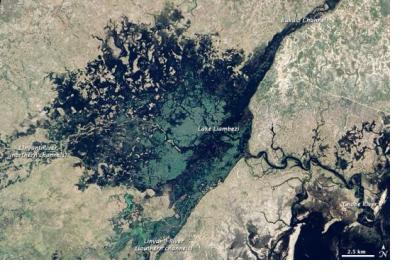For a long time, Zambia has been affected by extreme weather conditions that have adversely affected the livelihood of smallholder farmers, especially women, who constitute 78 % of the agricultural labor force. To strengthen the capacity of national and sub-national entities in monitoring the climate, the United Nations Development Programme (UNDP), in collaboration with the Zambian government through the Zambian Meteorological Department (ZMD), is implementing the project “Strengthening Climate Information and Early Warning Systems in Zambia to support climate resilient development”.
The project, which was launched in 2014, aims to improve climate monitoring capabilities, early warning systems and available information for responding to climate shocks and planning adaptation to climate change in Zambia. Besides minimising the impact of adverse weather on crops, it seeks to boost agricultural productivity.
The project responds to priorities established under the National Adaptation Programs of Action (NAPA) of Zambia, a process for Least Developed Countries (LDCs) to identify priority activities that respond to their urgent and immediate needs to adapt to climate change.
The project is structured in two broad components:
Investment and installation of critical technologies for weather and climate monitoring, including hydrometeorological monitoring stations, radar for monitoring severe weather, upper air for regional forecasts, and satellite monitoring equipment
Measures to integrate climate information into decision making, development plans and early warning systems.
Weather data from several sources
Under the project, ZMD has installed both automated and manual weather stations across the country. They will serve as early warning system to communities prone to extreme weather conditions and will provide them information in a timely manner. The project is using mobile phones and solar powered radios to disseminate weather forecast information to farmers. It is being piloted at the community level in three of Zambia’s ten provinces that are worst hit by droughts and floods.
One of the outputs of the project is the procurement and installation or rehabilitation of satellite monitoring equipment to receive real time climate and environmental information. Space-based data, for instance from weather satellites, has contributed to the improvement of EWS and plays an integral role in developing services to support communities for preparedness and adaptation to weather and climate impacts. One of the three outcomes envisaged under the projects is the integration of all components of the EWS.
Besides supporting stakeholders to generate reliable hydro-meteorological information, the project also aims to enable them to combine such information with other environmental and socio-economic data to improve evidence-based decision-making for early warning and adaptation responses as well as planning.
Women farmers lead the way
Zambian women farmers are making use of the new weather forecasts and agriculture advisories provided as a result of the project and are leading the way to fight climate change. They are involved in different ways such as through women’s self help groups or women’s cooperatives. The project provides education to farmers and combines indigenous knowledge and scientific weather forecasts to find simple solutions to address the impacts of climate change.
This collaboration has built resilience among farmers, besides improving agricultural productivity.

